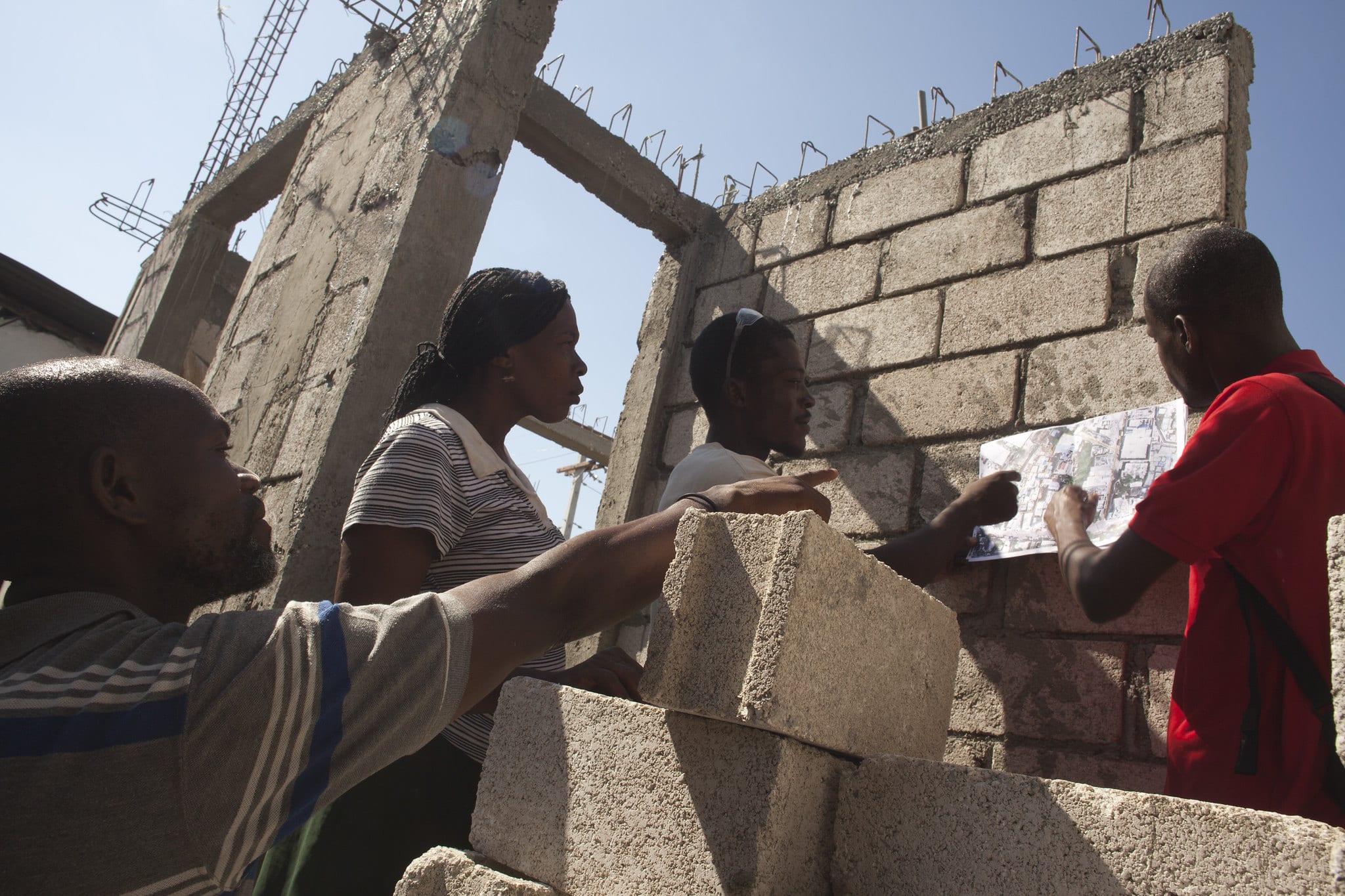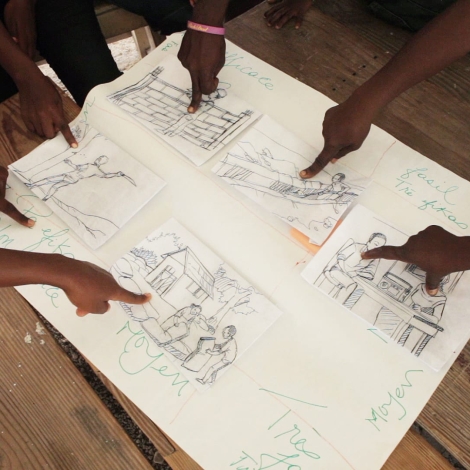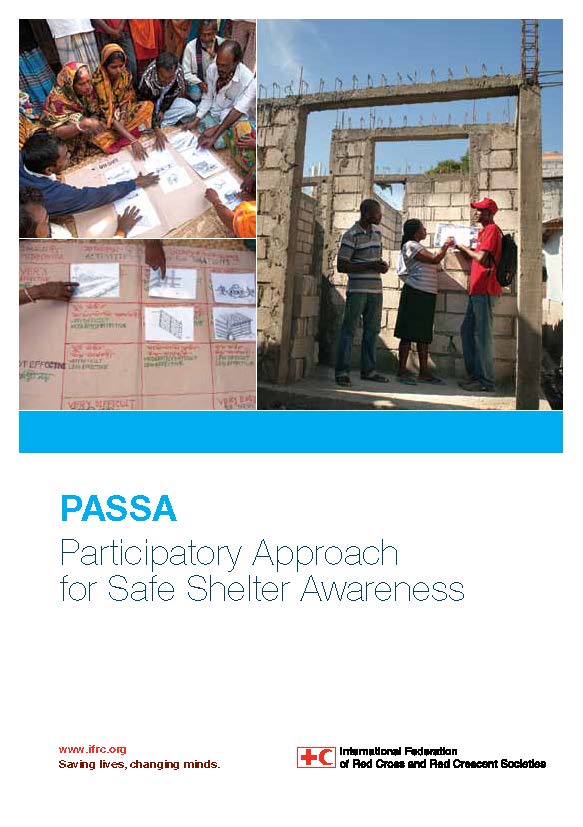The most common response to large-scale disasters is a well planned effort to ‘build back better.’ Increasingly, however, the response to smaller emergencies is to leave households to draw upon their own resources. The trend often leads communities with limited resources to rebuild the same vulnerabilities into their structures that jeopardized their safety during disaster. How then, can communities reduce risk and develop a more resilient built environment?
The Participatory Approach for Safe Shelter Awareness (PASSA) is a step-by-step methodology authored the International Federation of Red Cross and Red Crescent Societies. Documented and published into a 134-page field manual, the document outlines goals, strategies, and relevant logistical considerations for teams to conduct a community-driven risk reduction program for the built environment.
See the Participatory Approach for Safe Shelter Awareness in E4C’s Solutions Library
The PASSA strategy enables communities to identify their own solutions and comprehensive strategies for addressing the myriad problems that include spatial and environmental planning, local building cultures, and the effectiveness of local construction techniques. Additionally, the program fosters partnerships between local authorities, communities and supporting organizations to prepare for, cope with, and recover from disasters.

Residents of a disaster-stricken community in Haiti rebuild according to recommendations described in the PASSA manual. Photo: International Federation of Red Cross and Red Crescent Societies (IFRC), used with permission.
PASSA is organized into four sections. The first outlines goals and agendas for eight different community meetings that facilitate knowledge sharing and productive discussion. Complete with suggestions for ice-breaking activities and guidance for supporting an inclusive exchange, the activities help residents define vulnerabilities in structures and in neighborhoods, identify opportunities for improvements, and establish systems for monitoring and checking progress. The three following sections provide theoretical and logistical guidance for project managers, project volunteers, and community artists, respectively.
To date, the PASSA program has been implemented in more than 35 countries and translated into more than 20 languages.
Incorporating digital map and social media tools could lead to future iterations of the PASSA program that blur the line between action planning and active design, creating even more responsive, resilient communities.
Sandra D’Urzo, a Senior Officer with the IFRC and one of the original developers of the manual, describes the PASSA system as a ‘software’ package for disaster risk reduction and reconstruction, with Community Action Planning is at its core. “With emerging trends showing that youth become the most involved with the program’s activities, we’ve embarked on a path to enrich the PASSA activities with more innovative/creative tools. Towards that end, we recently secured a partnership with the Harvard Education School to consider ways to integrate digital tools such as Google Maps and social media platforms for increased reach,” Ms. D’Urzo says.
This possibility of incorporating such tools could lead to future iterations of the PASSA program that blur the line between action planning and active design, creating further responsive, resilient communities.
This manual is one of 18 manuals documented in the Habitat sector on Engineering For Change’s Solution Library, an online knowledge source for entrepreneurs and practitioners working in innovative products in the technology-for-development space. Ranging from toolkits on structural rehabilitation of buildings to the development of flood-resilient infrastructure, this sub-category of manuals reflects our intention to expand into methods of design, development, and humanitarian response.
See E4C’s growing database of field manuals for habitat construction
If you know of manuals or documents that you think should be included, please let us know in the comments on this page, or by email to solutions@engineeringforchange.org.

